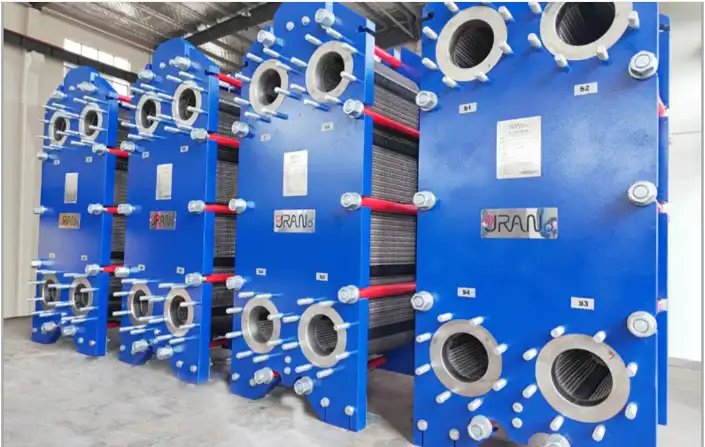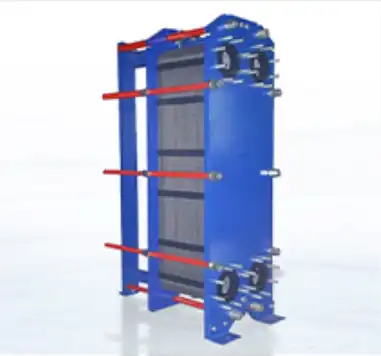In plate evaporator systems, picking the right glycol—whether propylene or ethylene—makes a big difference. It impacts how well the system works, how safe it is, how much upkeep it needs, and even the running costs. Let’s explore why this choice is so crucial for best results and meeting rules.

What Are the Efficiency Implications for Plate Evaporators?
In plate evaporator setups, efficiency depends on quick heat swaps between liquids. Ethylene glycol’s strong heat-moving ability cuts down on the pump power needed. This can save energy in the long run.
But in food or drug-making areas where spills could be dangerous, propylene glycol is a must, even if it’s a bit less effective. Modern evaporators built for food safety often have energy-saving perks. Picking the right fluid keeps efficiency and safety rules in balance.
How Do Safety and Environmental Factors Influence Your Choice?
Safety worries and nature’s well-being are key when deciding between these glycols. Official guidelines often tell you which one to use based on where and how the system operates.
What Makes Propylene Glycol Safer for Food-Grade Applications?
Propylene glycol gets a thumbs-up from the FDA as “generally safe” for food-related systems. Its low harm level makes it perfect for places where food might accidentally touch it.
The food and drink world heavily relies on industrial evaporators. In these spots, a safe coolant like propylene glycol fits with cleanliness and safety needs. Tools like stainless steel parts, self-cleaning setups, and exact controls help keep production clean and safe.
What Are the Maintenance and Longevity Considerations?
The kind of glycol you pick also affects how much care your plate evaporator will need over time. This is due to differences in how they cause rust or build-up in the system.
How Does Glycol Type Affect Corrosion and Scaling in Plate Evaporators?
Both glycols can lead to rust if not mixed with the right blockers. Ethylene glycol often causes more damage at high heat. Propylene glycol can break down into acids that cause build-up if not treated with helpers.
Strong materials that resist rust offer lasting strength against harsh stuff. Matching your glycol with the system’s build is vital to avoid early wear or breakdowns.
What Role Do Inhibitors Play in Extending Equipment Life?
Special additives called inhibitors get added to glycols to shield metal parts in evaporators from rust or gunk. They create a thin shield that stops harmful stuff in the fluid from touching the metal directly.
Checking inhibitor amounts often keeps this shield working for the system’s whole life. Without good protection, even tough materials can wear out under steady heat changes.
How Can You Optimize Heat Transfer Efficiency with the Right Glycol?
Choosing the best antifreeze mix directly changes how well a plate evaporator runs, especially with changing workloads or long running times.
Which Factors Reduce Heat Exchange Performance Over Time?
Several things can lower heat swap success. Fluid quality can drop. Germs can grow, especially in propylene mixes. Hard water can leave deposits. Rust bits can pile up on plates too.
Clever control setups, low-power fans, and fine-tuned heat swappers boost evaporator work. Testing fluids often spots problems early. Fixes like cleaning or adding chemicals can bring back good performance before harm happens.
Can the Wrong Glycol Cause Fouling or Flow Restrictions?
Yes, indeed. A badly protected or mismatched glycol can leave gunk that blocks narrow paths in plate channels. This raises pressure loss in the system. It also cuts down heat efficiency.
On top of that, some glycols might not mix well with other parts like seals or gaskets. This can cause leaks or breakdowns over time if not carefully chosen at the design stage.
Where Do Temperature Ranges Come Into Play?
Each glycol freezes at different points based on how strong the mix is. This decides if they fit for icy storage spots or hot industrial tasks.
Which Glycol Performs Better at Sub-Zero Conditions?
Ethylene glycol usually does better in super-cold settings. Its freezing point is lower than propylene glycol’s at the same strength. So, it’s a top pick for big cold storage places where keeping things below zero is key to save perishable items.
In food transport, evaporators keep exact cold levels to maintain freshness of goods.
Is One More Stable Than the Other at High Operating Temperatures?
At high heat, both glycols wear out over time. Ethylene breaks down quicker without good protection. Propylene’s breakdown stuff is less risky but still turns acidic if not balanced by extras.
Systems running hot all the time need strong protection mixes, no matter the fluid. This keeps them steady and stops inside damage for the long haul.
How Does Fluid Viscosity Impact Pumping and Energy Costs?
How thick a fluid is changes how smoothly it moves through pipes. Thicker fluids mean more push is needed, which bumps up pump power use.
Why Does Higher Viscosity Increase Operational Load?
Propylene glycol mixes are thicker than ethylene ones at the same strength and heat. So, pumps have to push harder to move them through plate evaporators. This raises energy bills a lot, especially in big setups like data centers or industrial cooling where fluids flow non-stop.
Evaporators bring energy-saving cooling options to ease this load.
Are There Trade-Offs Between Energy Use and Safety?
For sure. Ethylene flows easier because it’s less thick. This cuts down on pump energy. But there’s a catch—it’s riskier due to its harmful nature. On the flip side, propylene is safer but costs more to run since its thickness makes pumps work harder.
Designers must think about these choices based on local rules, risk of contact, heat ranges, and overall cost over time.
What Should You Look for When Selecting a Plate Evaporator?
Besides picking the right antifreeze, another big choice is finding a plate evaporator that meets your needs. It must also work well with the fluid you’ve chosen.
Why Material Compatibility with Glycol Is Critical
Some metals don’t get along with antifreeze unless treated or coated right. For instance, aluminum can rust fast with unprotected glycols. This leads to leaks or major failures over time.
Going for an evaporator made of stainless steel or rust-proof blends ensures it lasts. This is key when dealing with tough fluids in tasks like chemical splitting or wastewater cleaning. Smart control setups help manage processes with precision, boosting trust when paired with matching materials across the system.
How Design Parameters Affect Fluid Dynamics and Heat Transfer
The shape of plates, like their angles and gaps, changes how much swirl happens inside channels. This affects heat swap speed and pressure changes in the unit.
Systems built for lots of swirl mix hot and cold flows better. This improves results no matter the antifreeze, as long as its thickness stays within the maker’s limits set during planning.

Why Is It Important to Choose a Trusted Solution Provider?
Good quality starts not just with parts but also with picking dependable partners. They should know how everything works together in tricky heat systems across fields from farming to tech making.
What Makes Grano’s Plate Evaporator a Smart Choice for Your System?
Grano’s plate evaporators are built for exact heat swaps in many uses, including HVACR setups. They handle both propylene and ethylene glycols safely under custom settings for each job. From small units for tight spots to big ones for wide networks, they manage different loads well. They keep up high trust standards for industrial users everywhere.
How Grano Balances Efficiency, Durability, and Safety
Grano uses smart design ideas that consider material matches and strong sealing methods. This ensures no leaks, even under tough heat or pressure often seen in critical spots like drug clean rooms or oil plants. These need total containment and steady output. Grano protects long-term gains from the start while sticking to green goals in work and nature care.
FAQs
Q: Why is propylene glycol preferred in food settings?
A: Propylene glycol is seen as safe by the FDA for food areas. Its low harm level makes it fine for places where food might touch it by mistake.
Q: Can ethylene glycol save more energy than propylene?
A: Yes, it can. Ethylene glycol flows easier due to being less thick. This means pumps use less power, cutting energy costs over time.
Q: How does Grano ensure safety in its evaporators?
A: Grano builds with matching materials and tight seals to stop leaks. This works even under high heat or pressure, keeping critical setups safe and steady.






